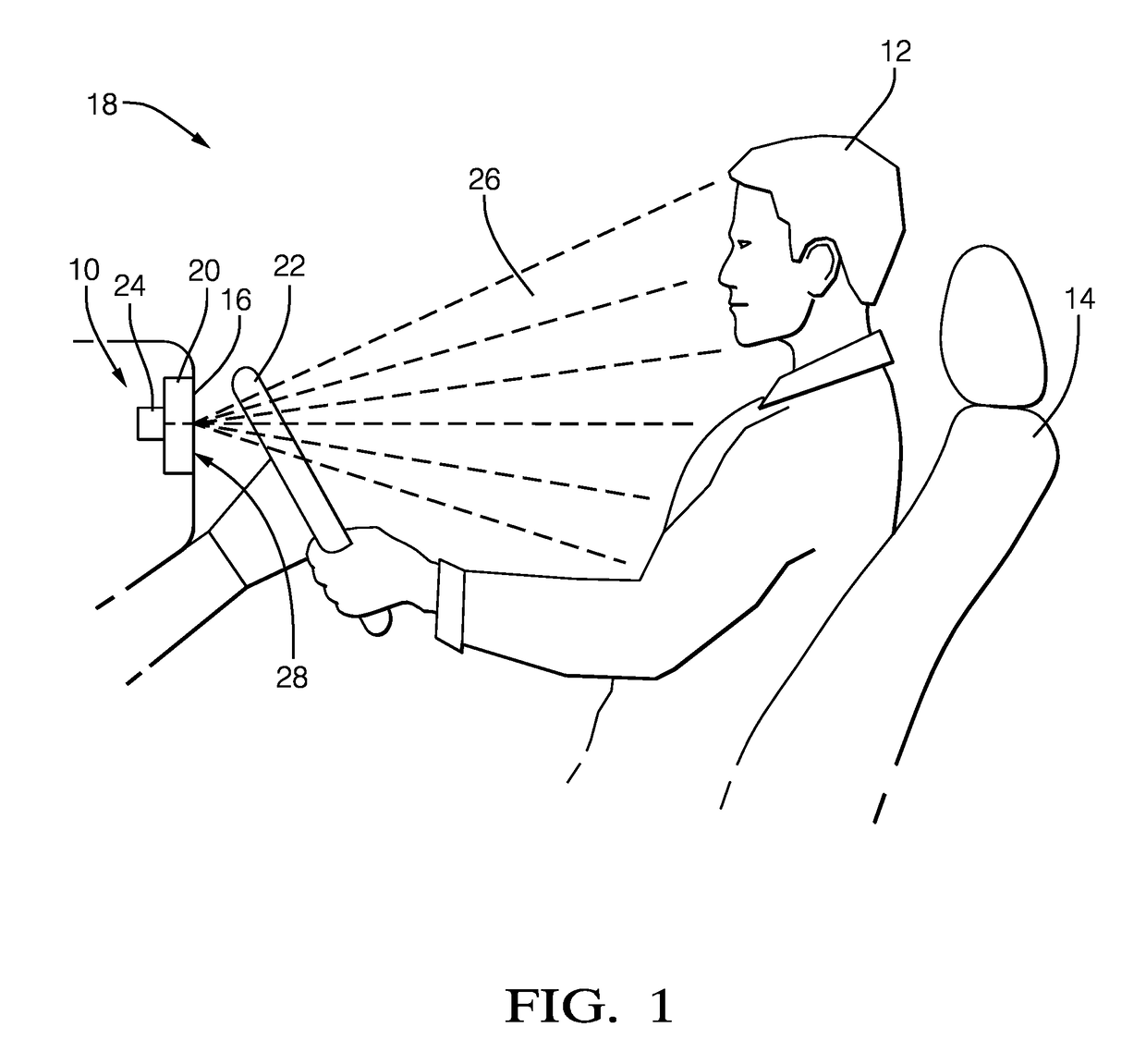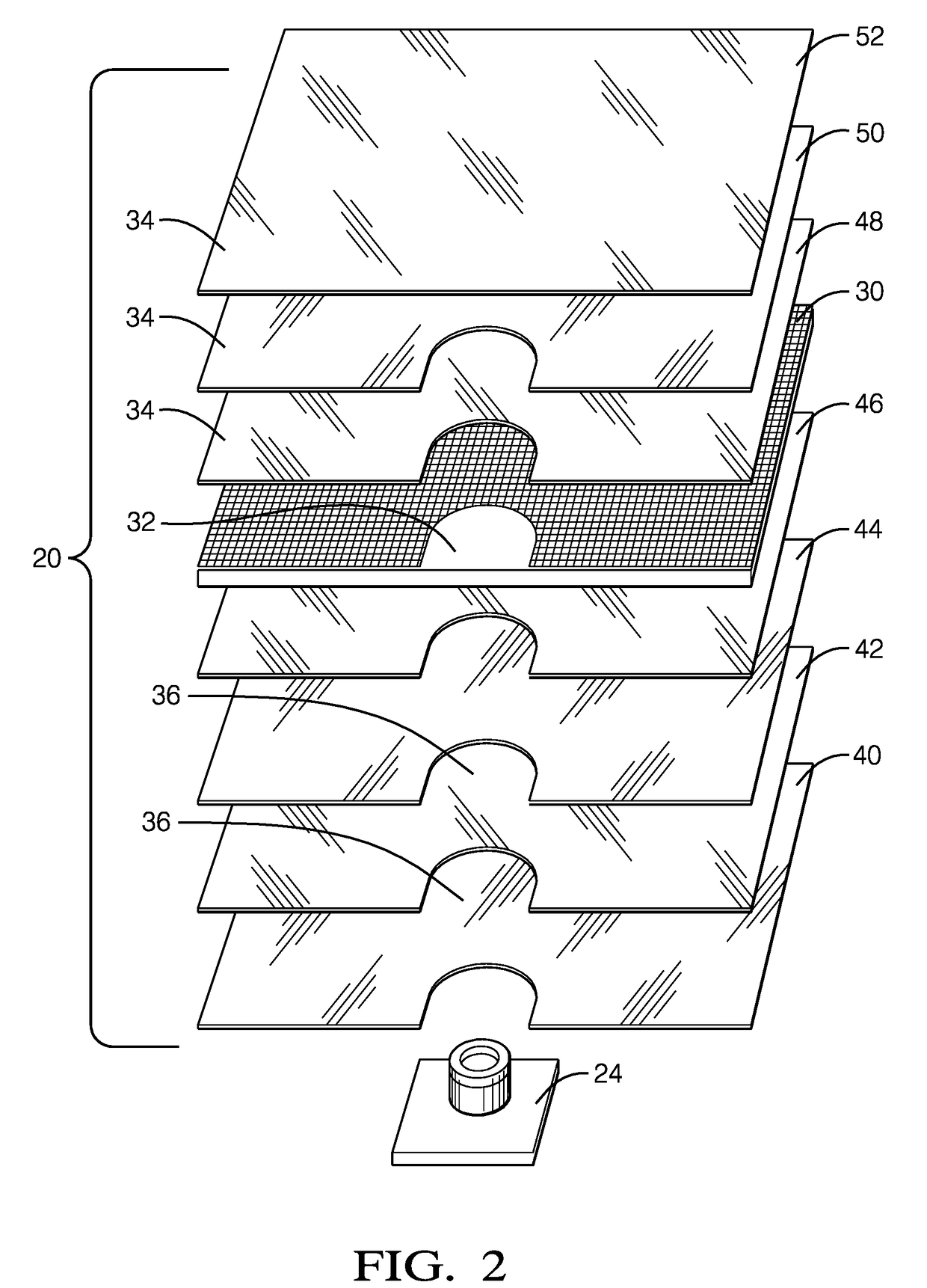Reconfigurable display with camera aperture therethrough
a technology of a display and an aperture, applied in the field of display, can solve the problems of difficult locating of one or more cameras or other sensors, minimal mechanical interference, and high cost, and achieve the effect of low cost, easy die-cutting, and low cos
- Summary
- Abstract
- Description
- Claims
- Application Information
AI Technical Summary
Benefits of technology
Problems solved by technology
Method used
Image
Examples
Embodiment Construction
[0010]The proposed solution to the problem stated is to use a modified display stack that includes an aperture for the camera or sensor as created via a cut-out or notch through all display layers except the TFT glass. The other layers consist of plastic molded parts for light dispersion and various film layers that can be easily die-cut to allow for an optical path through the display stack. Layers within the display stack that are printed through a manufacturing process are modified such that elements are not printed in the area desired for the camera aperture. This may include, for example, the color filter. The camera or any other type of sensor requiring an aperture through the display would be rear-mounted and have a site hole through the created aperture. Through normal control of the display image, the area of TFT that shall be transparent for the camera system can be gated by the controller software such that the camera optics is minimally obstructed. Optionally, as needed,...
PUM
 Login to View More
Login to View More Abstract
Description
Claims
Application Information
 Login to View More
Login to View More - R&D
- Intellectual Property
- Life Sciences
- Materials
- Tech Scout
- Unparalleled Data Quality
- Higher Quality Content
- 60% Fewer Hallucinations
Browse by: Latest US Patents, China's latest patents, Technical Efficacy Thesaurus, Application Domain, Technology Topic, Popular Technical Reports.
© 2025 PatSnap. All rights reserved.Legal|Privacy policy|Modern Slavery Act Transparency Statement|Sitemap|About US| Contact US: help@patsnap.com



